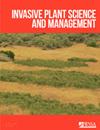经过25年的公共教育,蒙大拿州的有害杂草观点和行为
IF 1.2
4区 生物学
Q3 PLANT SCIENCES
引用次数: 1
摘要
摘要1994年,进行了一项全面的人口调查,以评估蒙大拿人对有毒杂草的了解,该调查的结果发起了一场正在进行的全州教育运动。2019年,我们进行了另一项总体人口调查,以评估蒙大拿人与有害杂草有关的观点和行为,并确定传播有害杂草信息的新方法。我们还提出了一些问题来评估25年期间的变化,尽管我们进行直接比较的能力受到限制。我们在2019年3月至5月期间实施了一项基于邮件的调查。回复率为18%,有来自4582个有效邮寄地址的830条回复。不到一半(48%)的受访者表示对有毒杂草“知之甚少”或“一无所知”,这将比1994年提高19个百分点。绝大多数(68%)的受访者表示,有毒杂草是一个“严重”或“非常严重”的问题,对与有毒杂草相关的负面影响范围表示赞赏。大多数受访者(61%)认为人类对有害杂草的传播“贡献很大”,受访者报告称,随着时间的推移,他们防止有害杂草传播的行为有所增加。虽然1994年的受访者认为电视、报纸和广播是传播有害杂草信息的最佳方式,但受访者现在也认为网站和社交媒体页面等方法是有效的。我们的调查发现,需要为女性和18至39岁年龄段的人提供更多的教育信息。总的来说,我们的研究结果表明,看过不同形式广告并参加过教育项目的人更有可能认为有害杂草是一个严重的问题,并采取行动阻止其传播。本文章由计算机程序翻译,如有差异,请以英文原文为准。
Noxious weed views and behaviors in Montana after 25 years of public education
Abstract In 1994, a general population survey was conducted to evaluate Montanans' knowledge about noxious weeds, and results from that survey launched an ongoing statewide education campaign. In 2019, we conducted another general population survey to assess the views and behaviors of Montanans as they relate to noxious weeds and to identify new approaches for disseminating noxious weed information. We also asked questions to evaluate changes over the 25-yr period, although our ability to make direct comparisons is subject to limitations. We implemented a mail-based survey in March through May 2019. The response rate was 18%, with 830 responses from 4,582 valid mailing addresses. Just under half (48%) of respondents report “little” or “no” knowledge about noxious weeds, which would constitute a 19-point improvement since 1994. A large majority (68%) of respondents indicate that noxious weeds are a “serious” or “very serious” problem, and appreciation for the range of negative impacts associated with noxious weeds is considerable. Most respondents (61%) identify humans as contributing “a lot” to noxious weed spread, and respondents report that their behaviors to prevent the spread of noxious weeds have increased over time. While the 1994 respondents rated television, newspaper, and radio as the best ways to disseminate information about noxious weeds, respondents now also recognize methods such as websites and social media pages as effective. Our survey identifies a need for increased educational messaging for women and people in the 18 to 39 age group. Overall, our results indicate that individuals who have seen different forms of advertisements and have participated in educational programs are more likely to consider noxious weeds a serious problem and to engage in behaviors to stop their spread.
求助全文
通过发布文献求助,成功后即可免费获取论文全文。
去求助
来源期刊

Invasive Plant Science and Management
PLANT SCIENCES-
CiteScore
2.20
自引率
9.10%
发文量
24
审稿时长
6-12 weeks
期刊介绍:
Invasive Plant Science and Management (IPSM) is an online peer-reviewed journal focusing on fundamental and applied research on invasive plant biology, ecology, management, and restoration of invaded non-crop areas, and on other aspects relevant to invasive species, including educational activities and policy issues. Topics include the biology and ecology of invasive plants in rangeland, prairie, pasture, wildland, forestry, riparian, wetland, aquatic, recreational, rights-of-ways, and other non-crop (parks, preserves, natural areas) settings; genetics of invasive plants; social, ecological, and economic impacts of invasive plants and their management; design, efficacy, and integration of control tools; land restoration and rehabilitation; effects of management on soil, air, water, and wildlife; education, extension, and outreach methods and resources; technology and product reports; mapping and remote sensing, inventory and monitoring; technology transfer tools; case study reports; and regulatory issues.
 求助内容:
求助内容: 应助结果提醒方式:
应助结果提醒方式:


